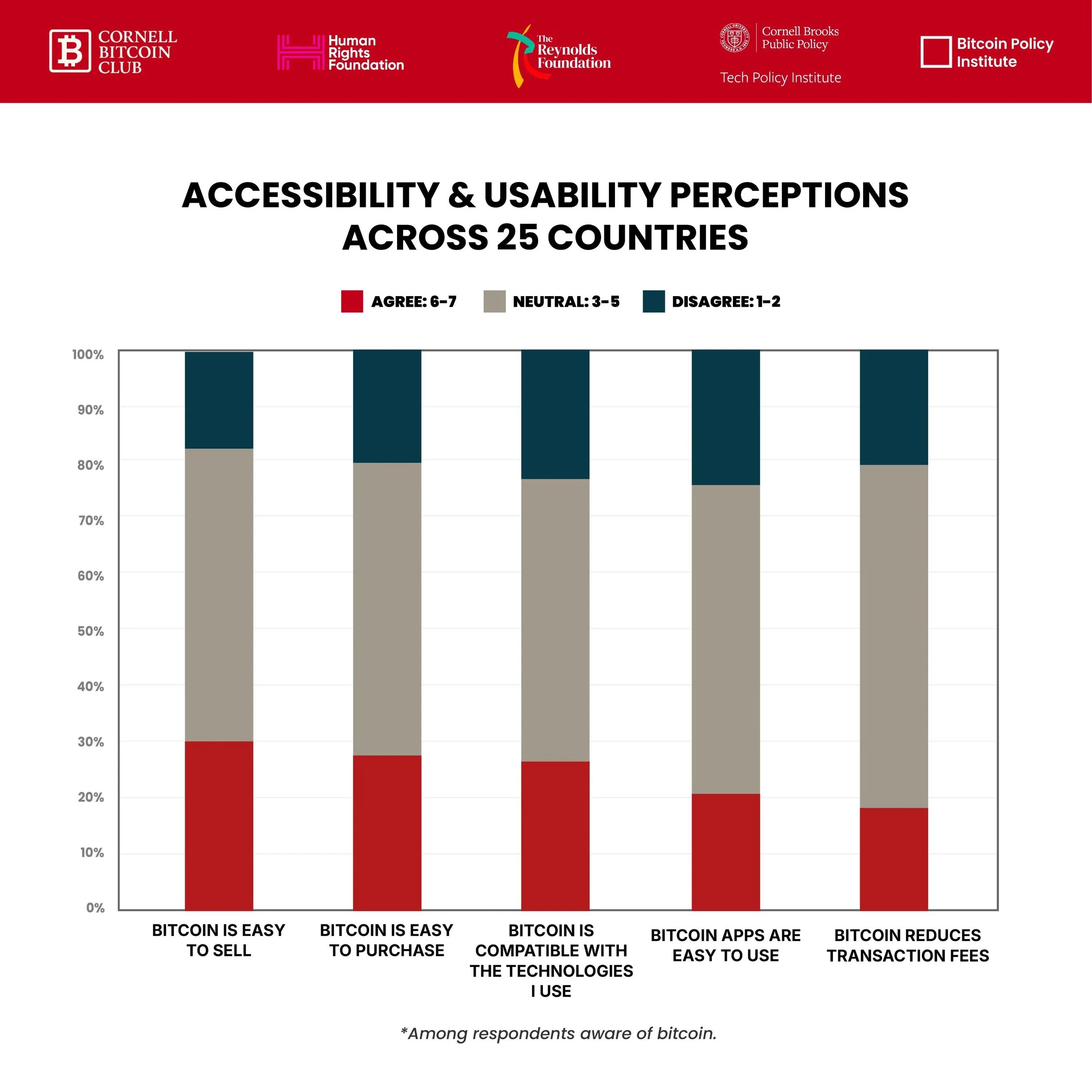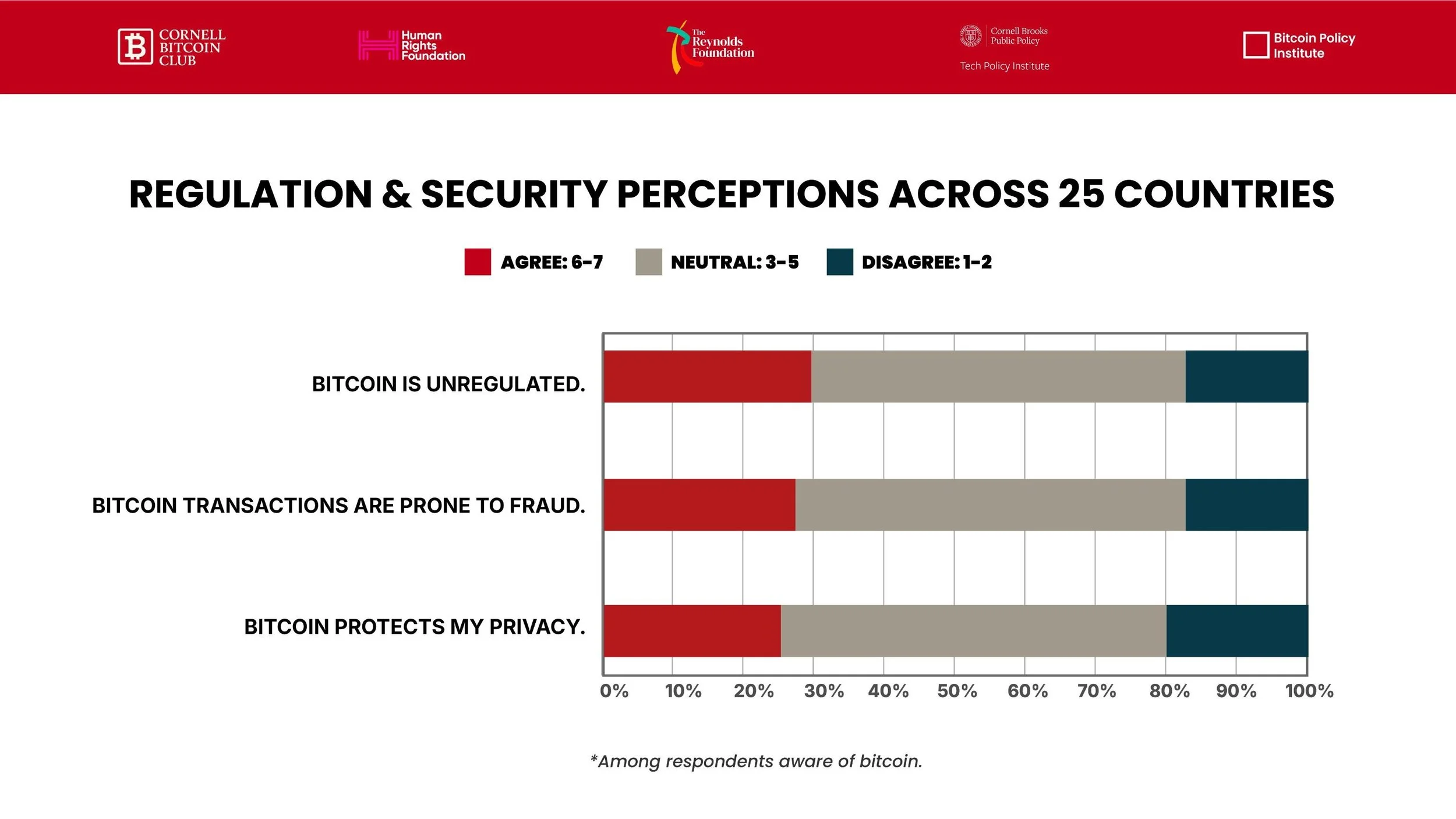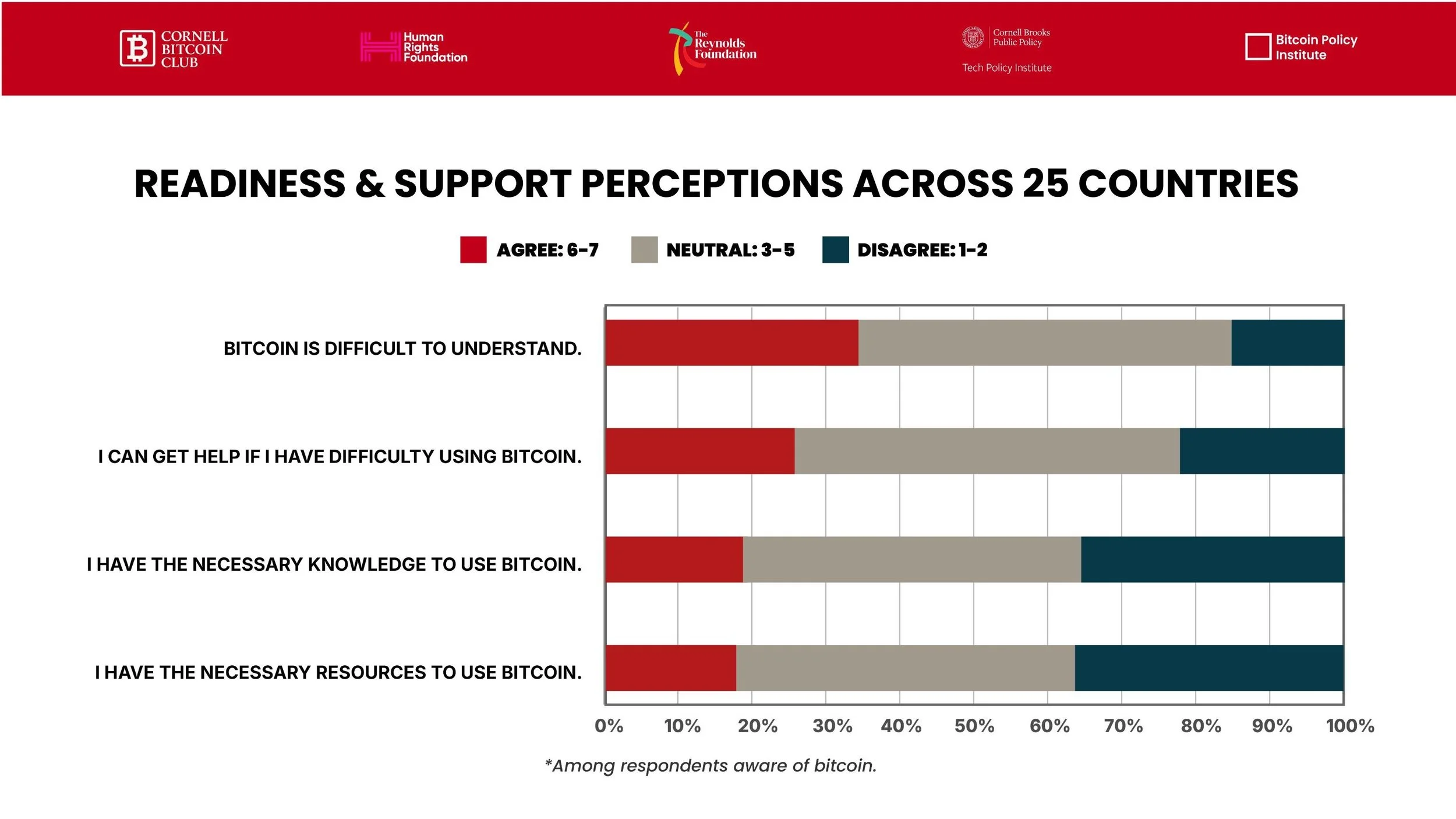Week 9: Perceptions of Bitcoin (Part II)
In Week 8, we examined how people across 25 countries imagine bitcoin’s future—whether they see it replacing currencies or becoming a main form of payment.
This week, we focus on the present: How do people who already know about bitcoin perceive its accessibility, security, and usability today?
Across all 25 countries, the results point to a landscape defined by hesitation, uncertainty, and opportunity.
📊 Accessibility & Usability
We asked respondents aware of bitcoin whether they agree with statements about its ease of use.
30% agree bitcoin is easy to sell or purchase.
19% agree it reduces transaction fees.
Neutral responses dominate across every measure, including compatibility with technologies and app usability.
Takeaway: Even among those familiar with bitcoin, confidence in its day-to-day usability remains limited. The neutral majority suggests that people neither reject nor fully embrace its practicality—they simply aren’t sure yet.
⚖️ Regulation & Security
We then asked how respondents perceive bitcoin’s regulation and security profile.
29% agree bitcoin is unregulated.
28% agree bitcoin transactions are prone to fraud.
25% agree bitcoin protects their privacy.
Takeaway: Uncertainty outweighs conviction. Most respondents are undecided about bitcoin’s regulatory status and its security promises. This ambiguity may reflect limited exposure to bitcoin infrastructure or inconsistent messaging around consumer protections.
📚 Readiness & Support
Finally, we explored perceptions of personal readiness and available support for using bitcoin.
34% say bitcoin is difficult to understand.
Only 19% feel they have the necessary knowledge to use it.
18% feel they have the necessary resources to use it.
Roughly 30% believe they could get help if they encountered difficulty.
Takeaway: As seen in earlier weeks, adoption barriers extend beyond economics. For many, limited educational resources and a lack of accessible on-ramps remain the greatest obstacles.
🧭 Overall Takeaway
Perceptions of bitcoin today remain cautious:
Usability concerns continue to limit confidence in everyday use.
Security perceptions are marked more by uncertainty than by rejection.
Many feel they lack the knowledge or support to participate meaningfully.
The data suggests that education, usability improvements, and access to trustworthy on-ramps may influence global bitcoin adoption as much as price or regulation.
As the world debates bitcoin’s future, its present story remains one of learning, trust-building, and inclusion.
🔮 Looking Ahead
Next week, we’ll continue to explore catalysts of bitcoin adoption and what it would take should “hyperbitcoinization” occur.
Until then, all our open-source research is available at: 🔗 www.cornellbitcoinclub.org


